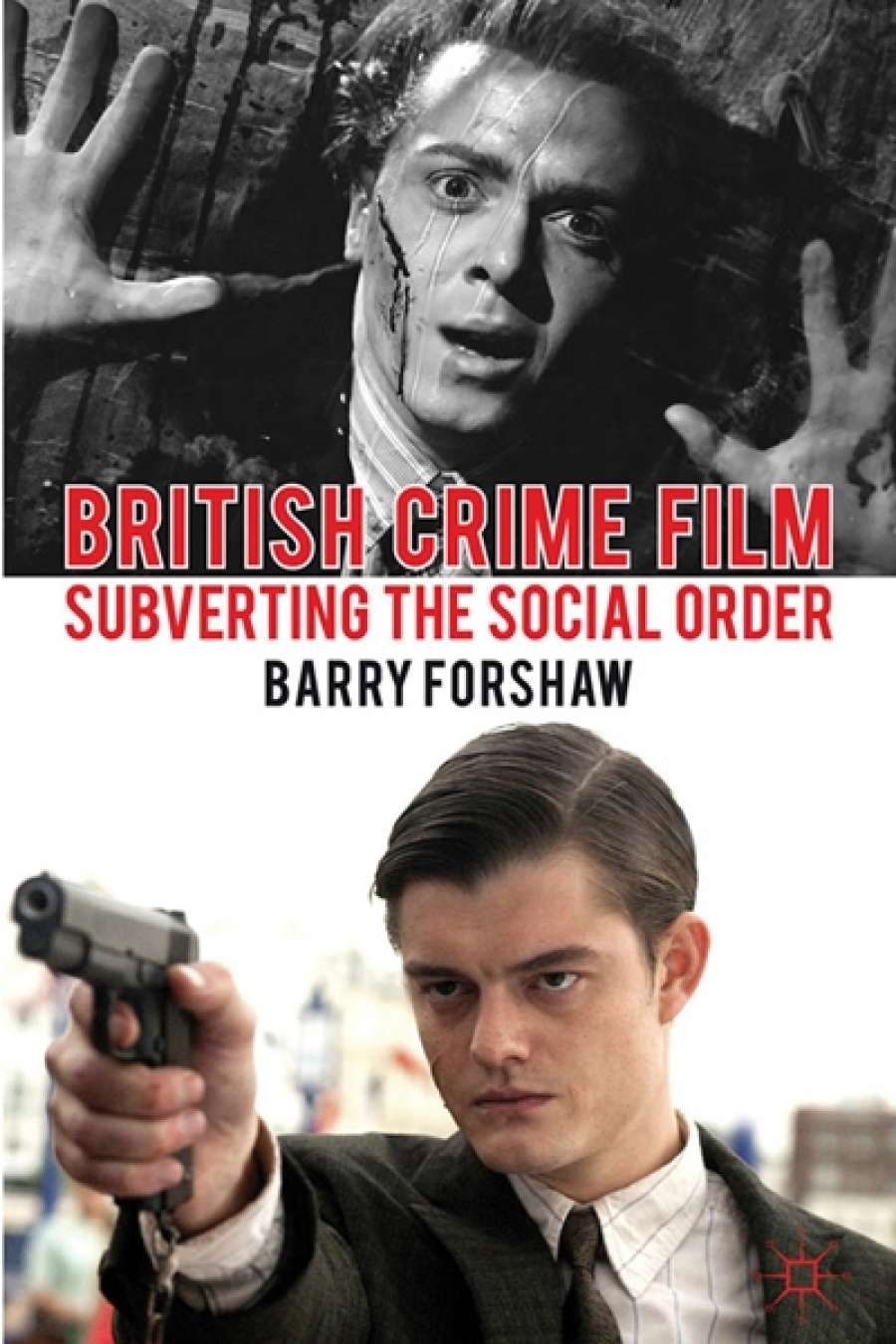
- Free Article: No
- Contents Category: Film
- Review Article: Yes
- Online Only: No
- Custom Highlight Text:
Barry Forshaw, in his latest book, has turned from crime fiction in print to crime in the cinema: specifically British cinema. He establishes immediately that his primary interest is ‘genre cinema’. He does not define exactly what he means by this term, but his assumptions in relation to it are soon pretty clear. A genre film is one where the primary aim of the film-makers is ‘entertainment’ rather than any deeper aesthetic or ideological intent.
- Book 1 Title: British Crime Film
- Book 1 Subtitle: Subverting the Social Order
- Book 1 Biblio: Palgrave Macmillan, $39.95 pb, 253 pp, 9781137005038
However, Forshaw has a secondary agenda in this book, which is equally as important as the social history aspect of the work. As he states: ‘Some remarkable films in the field are already celebrated ... while others remain unfairly neglected.’ What becomes clear is that Forshaw’s aim is to rescue from critical oblivion some remarkable films that have been hitherto ignored. The reason for this varies, but in the majority of cases the films have, because of their ‘genre’ nature, been disdained on initial release and have become increasingly difficult to see over the years.
The work itself loosely follows a chronological structure: the early chapters focus on the immediate post-World War II era, while the final chapters deal with the first decade of the twenty-first century. However, the core of the work is found in the central chapters, each of which deals with a specific theme and covers the period from the 1940s to the 1990s. These chapters all follow a standard structure: a brief introduction of the social theme to be tackled, then a discussion of films that illustrate this theme. Usually, there is a broad sweep, then a focus on one or two films that Forshaw deems the most germane. It is here that he ‘rescues’ films; his choices are rarely well known. A typical example occurs in the chapter titled ‘Shame of a Nation: Juvenile Delinquents and Exploitation’, in which Forshaw examines the phenomenon of ‘moral panic’ in relation to rebellious youth. In passing, he gives a brief appreciation of Dirk Bogarde’s early career as a juvenile delinquent (verdict: not very convincing), before concentrating on one of the heroes of the book: Joseph Losey. The film is The Sleeping Tiger (1954), and Forshaw makes a fair argument for Losey’s significance in the history of British cinema, even at this early stage. In a later chapter, Forshaw alleges that the infamous House Un-American Activities Committee ‘did British cinema a favour by consigning left-leaning directors such as Joseph Losey to professional exile in the UK’.
After a couple of minor references to such exploitation fare as Beat Girl (Edmond T. Gréville, 1960), he gives a fairly detailed analysis of the film that is the unsung hero of the chapter, Never Let Go (John Guillermin, 1960). The film is compared to Arthur Miller’s Death of a Salesman (1949) and Vittorio de Sica’s key neo-realist film Bicycle Thieves (1948). It is passages like these that reveal Forshaw’s strength as a critic. He appears to have seen just about every film ever made in the United Kingdom with a crime in it, and he is able to give each film a social context in British history, plus an industrial context, plus a cultural context in cinema as an art.
Another aspect of this ‘rescue’ work that comes to the fore is the question of availability. Since the advent of the home video, and particularly in the last decade with the acceleration of the digital era, the study of film has become a much more detailed discipline. Classical film writing tended to rely on the memory of the writer. In some cases, this meant remembering a film seen years before. Forshaw writes about films that he has seen recently and probably frequently. He acknowledges that the primary mode of access to film is via the little silver disc.
If there is one problem with the work, it is the question of selection. It is inevitable that there are films missing that I would like to have seen included, particularly Clive Donner’s masterpiece, Nothing But the Best (1964), in which Alan Bates gets away with murder, literally, on his way to the top. However, the inclusion of John Huston’s patently American The List of Adrian Messenger (1963), with George C. Scott faking an English accent in a film shot in Ireland, is truly beyond the pale. Apart from this minor quibble and some very sloppy editing, the book is refreshingly revisionist and well worth the price of admission.


Comments powered by CComment